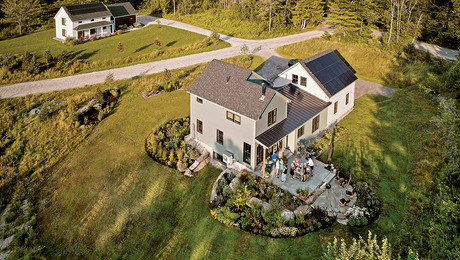I’ve got an addition going on my Cape Cod style house – basically ‘out-and-up’ – expanding a first floor room and adding a second floor room above the first floor expansion.
The builder has just broken into the existing 2nd floor in order to open it up to the new addition. In doing so, he has found something that he neither understands nor can explain.
He was hoping to simply attach the new ceiling joists to the ends of the existing ones and therefore continue the existing ceiling into the new space – a sort of ‘extension’ of the existing joists.
However, he has discovered that the existing ceiling joists run from one side of one roof rafter to the opposite side of the other. In other words, if the joist is screwed (yes, that’s another strange discovery – the joists are screwed, not nailed) to the left side of the rafter on the front of the house, it crosses over and is attached to the right side of the rafter in the back. Therefore, if he attached the new joists to the old, everything would be out-of-whack (more so than it evidently already is).
So, the question is: Is this normal practice? If so, why? If not, should I worry? In the process of building this addition, we’ve discovered a number of, shall we say ‘liberties’ that were taken in the construction of the house with regard to code. So, this doesn’t really surprise me. I’m really just curious why this particular aspect would be done this way.
Thanks in advance.


















Replies
It sounds like a common lay out error, unless the ceiling joists are already spliced together at an unknown location... this would explain the offset..... your new extension should be ok if the builder uses the lay out at the new attachment points,and carries them to the other side.... basically all the joists are for is to attack you new sheetrock ceilings to... and as long as they are level , and have good nailers at the edges ... there will only have to be minor cuts in the sheetrock to adjust for the layout discrepencies. hope this helps,,, if I understood the problem correctly. Mark